Abstract
Two strains of Salmonella typhimurium differing greatly in virulence for mice have been examined by various means for their quantitative content of the antigenic determinants 4, 5 and 12. By three methods the virulent strain consistently revealed a content of each of these antigens approximately twice that of the avirulent strain. The implications of this finding for the interpretation of factors involved in bacterial virulence are discussed.
Full text
PDF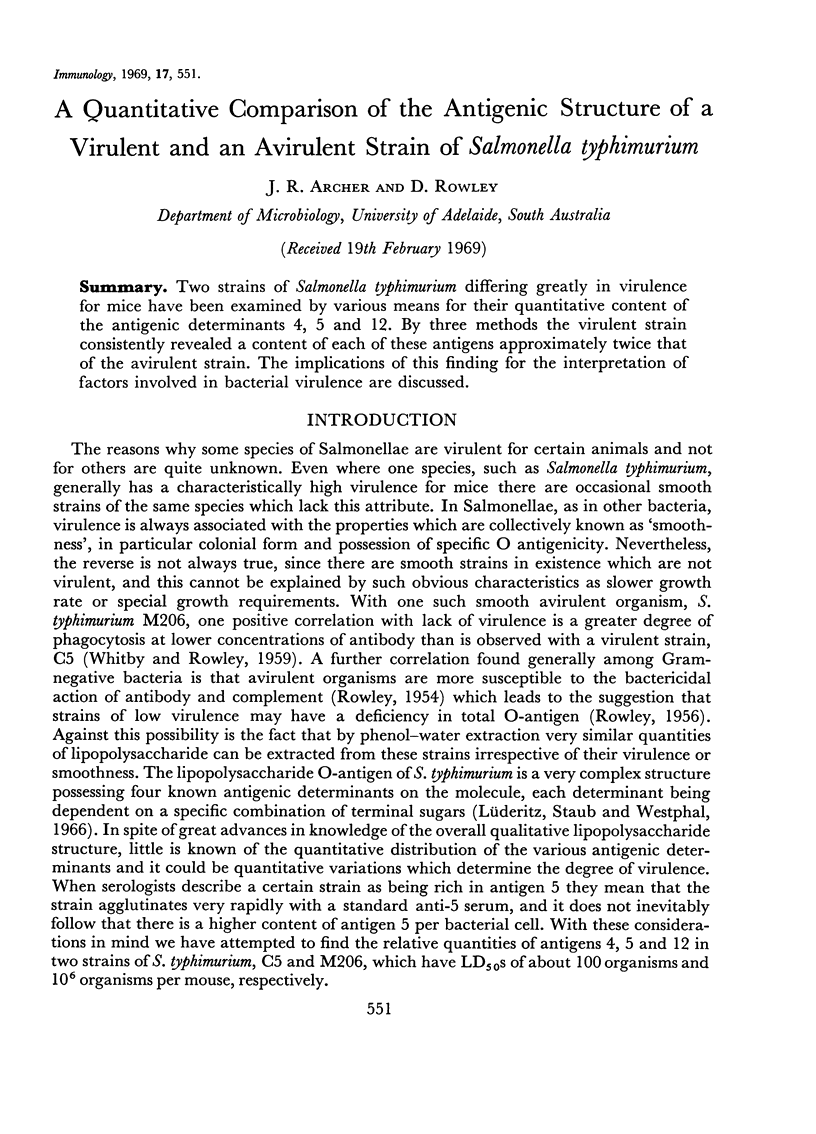
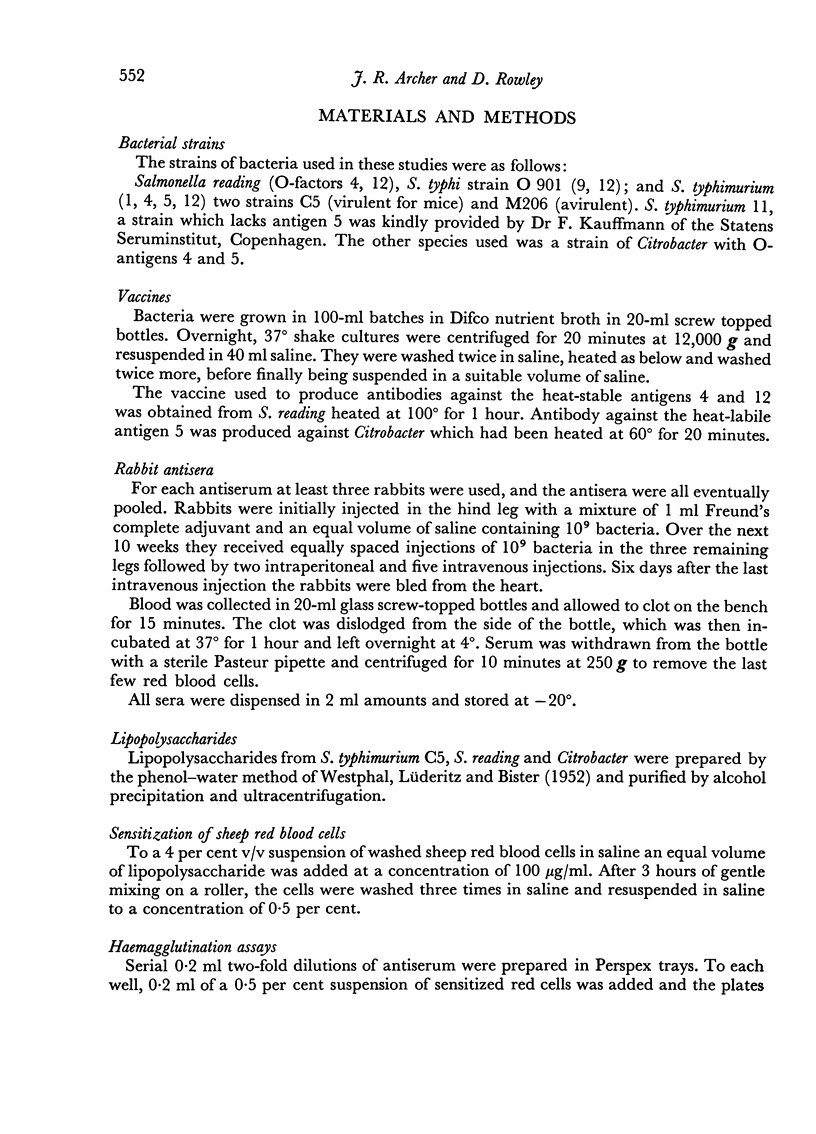
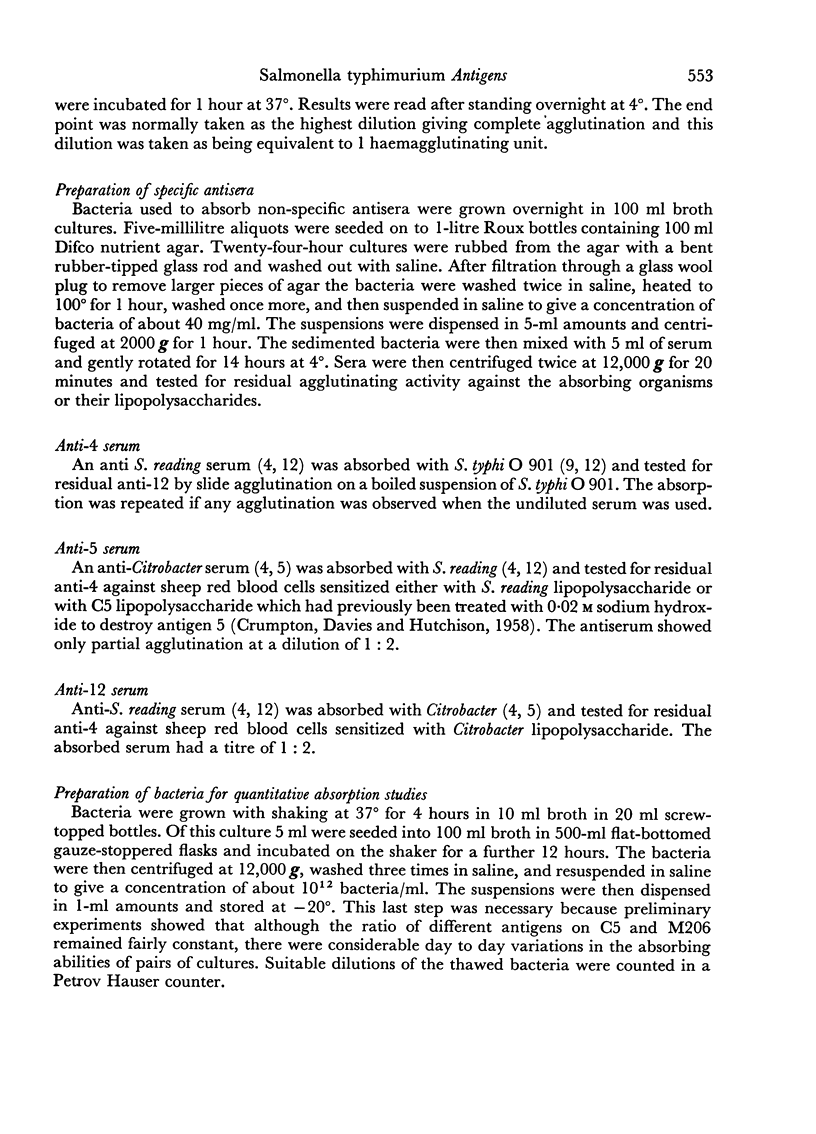
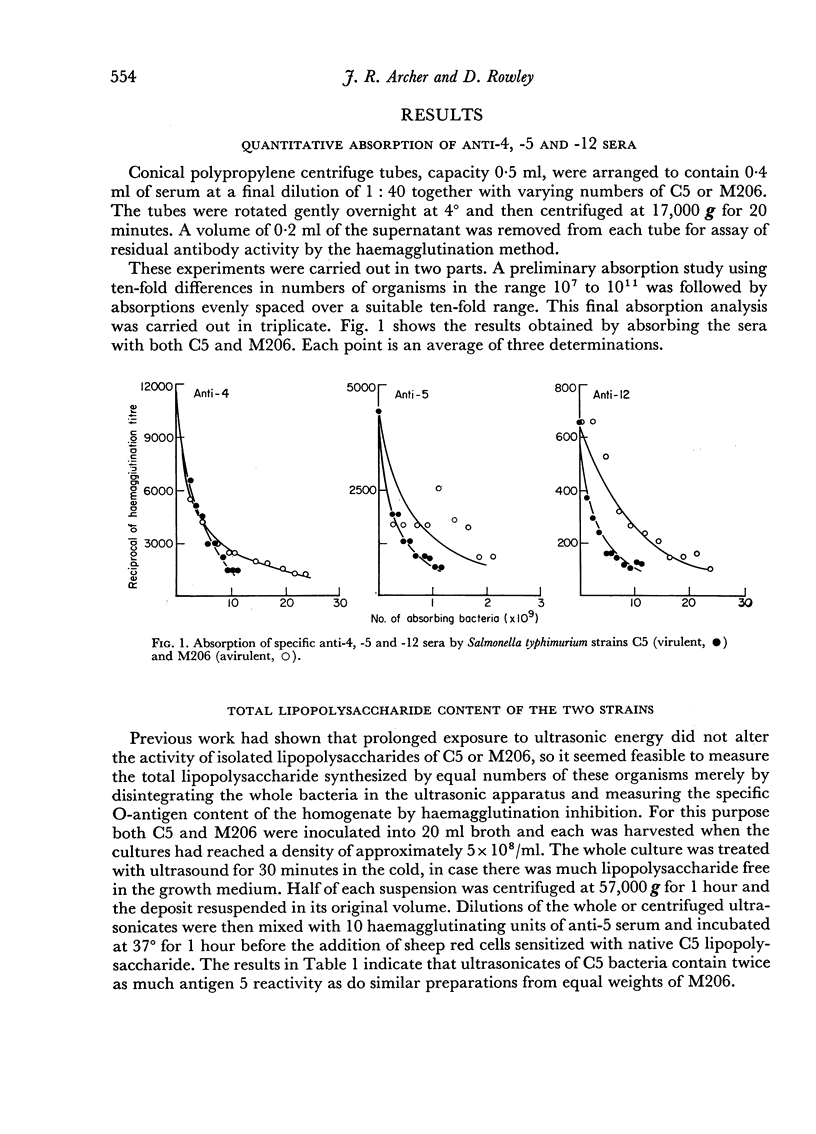
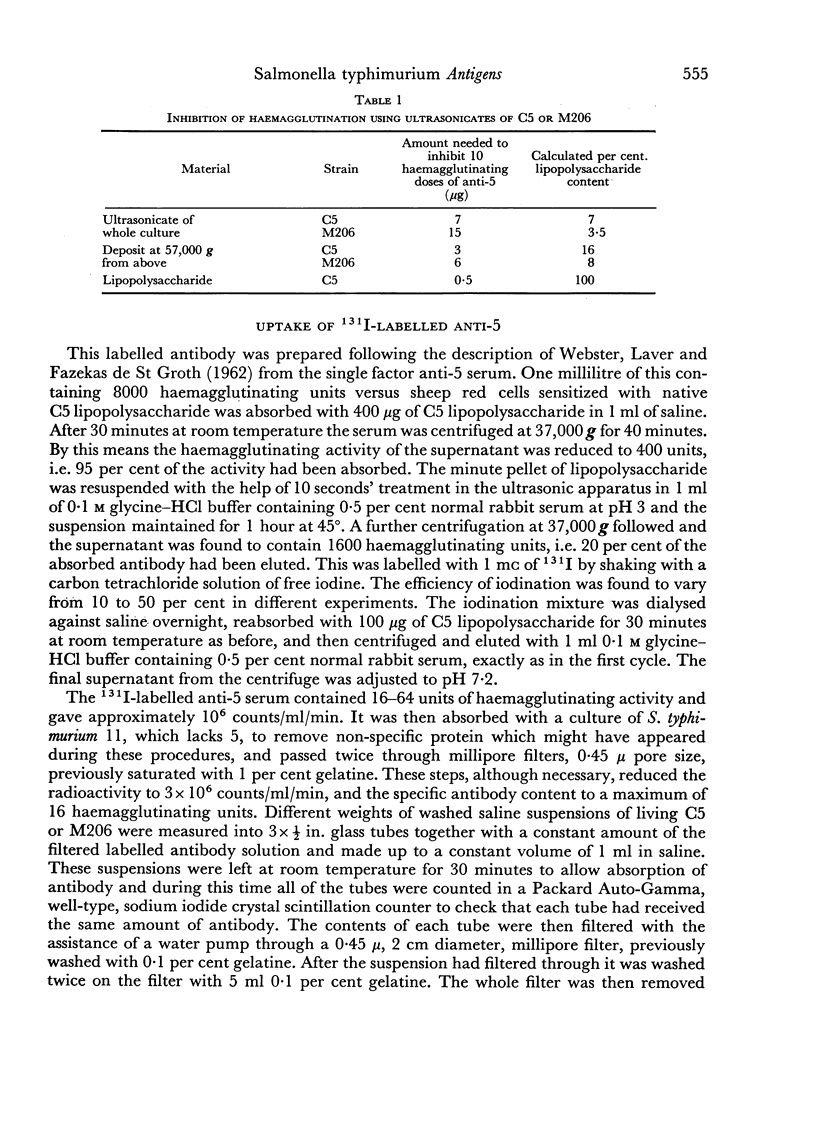


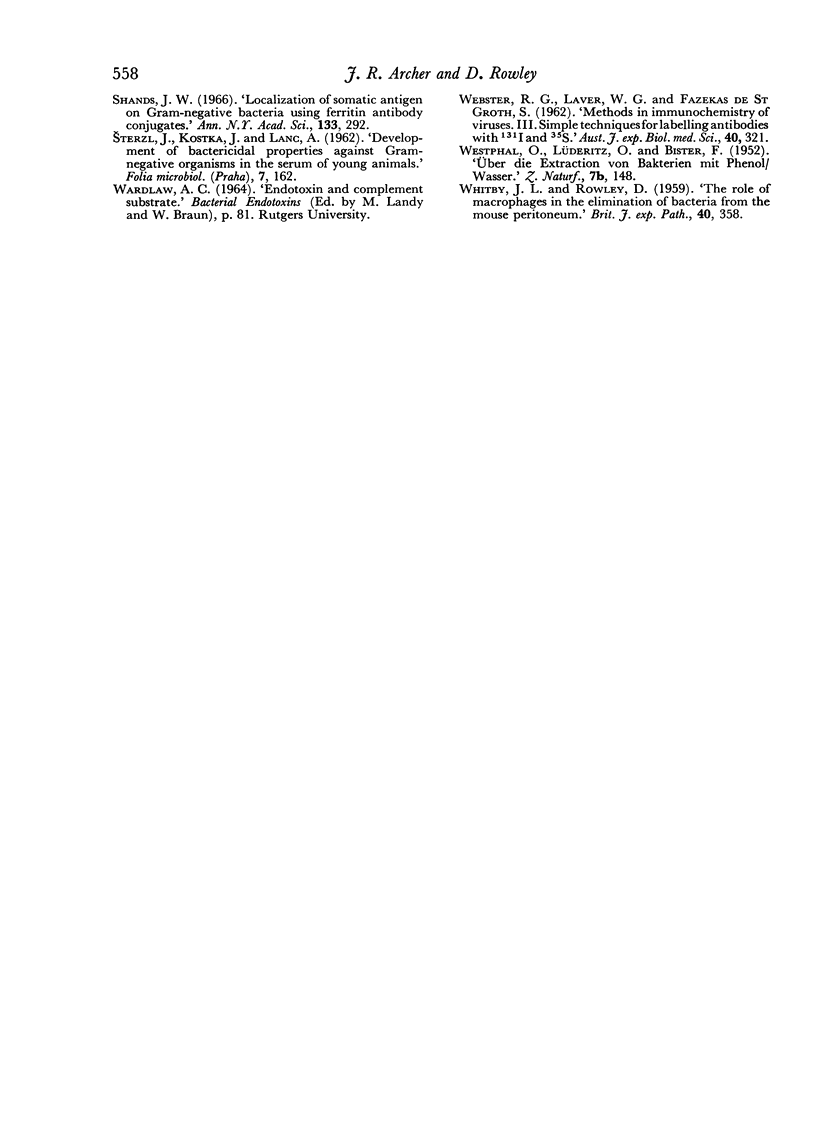
Selected References
These references are in PubMed. This may not be the complete list of references from this article.
- AUZINS I., ROWLEY D. FACTORS INVOLVED IN THE ADHERENCE OF S. TYPHIMURIUM C5 AND MOUSE PERITONEAL MACROPHAGES. Aust J Exp Biol Med Sci. 1963 Oct;41:539–546. doi: 10.1038/icb.1963.44. [DOI] [PubMed] [Google Scholar]
- CRUMPTON M. J., DAVIES D. A., HUTCHISON A. M. The serological specificities of Pasteurella pseudotuberculosis somatic antigens. J Gen Microbiol. 1958 Feb;18(1):129–139. doi: 10.1099/00221287-18-1-129. [DOI] [PubMed] [Google Scholar]
- Lüderitz O., Staub A. M., Westphal O. Immunochemistry of O and R antigens of Salmonella and related Enterobacteriaceae. Bacteriol Rev. 1966 Mar;30(1):192–255. doi: 10.1128/br.30.1.192-255.1966. [DOI] [PMC free article] [PubMed] [Google Scholar]
- MacLEOD C. M., KRAUS M. R. Relation of virulence of pneumococcal strains for mice to the quantity of capsular polysaccharide formed in vitro. J Exp Med. 1950 Jul 1;92(1):1–9. doi: 10.1084/jem.92.1.1. [DOI] [PMC free article] [PubMed] [Google Scholar]
- ROWLEY D. Rapidly induced changes in the level of non-specific immunity in laboratory animals. Br J Exp Pathol. 1956 Jun;37(3):223–234. [PMC free article] [PubMed] [Google Scholar]
- ROWLEY D. The virulence of strains of Bacterium coli for mice. Br J Exp Pathol. 1954 Dec;35(6):528–538. [PMC free article] [PubMed] [Google Scholar]
- Rowley D., Turner K. J. Number of molecules of antibody required to promote phagocytosis of one bacterium. Nature. 1966 Apr 30;210(5035):496–498. doi: 10.1038/210496a0. [DOI] [PubMed] [Google Scholar]
- STERZL J., KOSTKA J., LANC A. Development of bactericidal properties against gram-negative organisms in the serum of young animals. Folia Microbiol (Praha) 1962 May;7:162–174. doi: 10.1007/BF02928237. [DOI] [PubMed] [Google Scholar]
- Shands J. W. Localization of somatic antigen on gram-negative bacteria using ferritin antibody conjugates. Ann N Y Acad Sci. 1966 Jun 30;133(2):292–298. doi: 10.1111/j.1749-6632.1966.tb52372.x. [DOI] [PubMed] [Google Scholar]
- WEBSTER R. G., LAVER W. G., FAZEKAS DE ST GROWTH S. Methods in immunochemistry of viruses. 3. Simple techniques for labelling antibodies with 131-I and 35S. Aust J Exp Biol Med Sci. 1962 Aug;40:321–328. [PubMed] [Google Scholar]
- WHITBY J. L., ROWLEY D. The role of macrophages in the elimination of bacteria from the mouse peritoneum. Br J Exp Pathol. 1959 Aug;40:358–370. [PMC free article] [PubMed] [Google Scholar]


